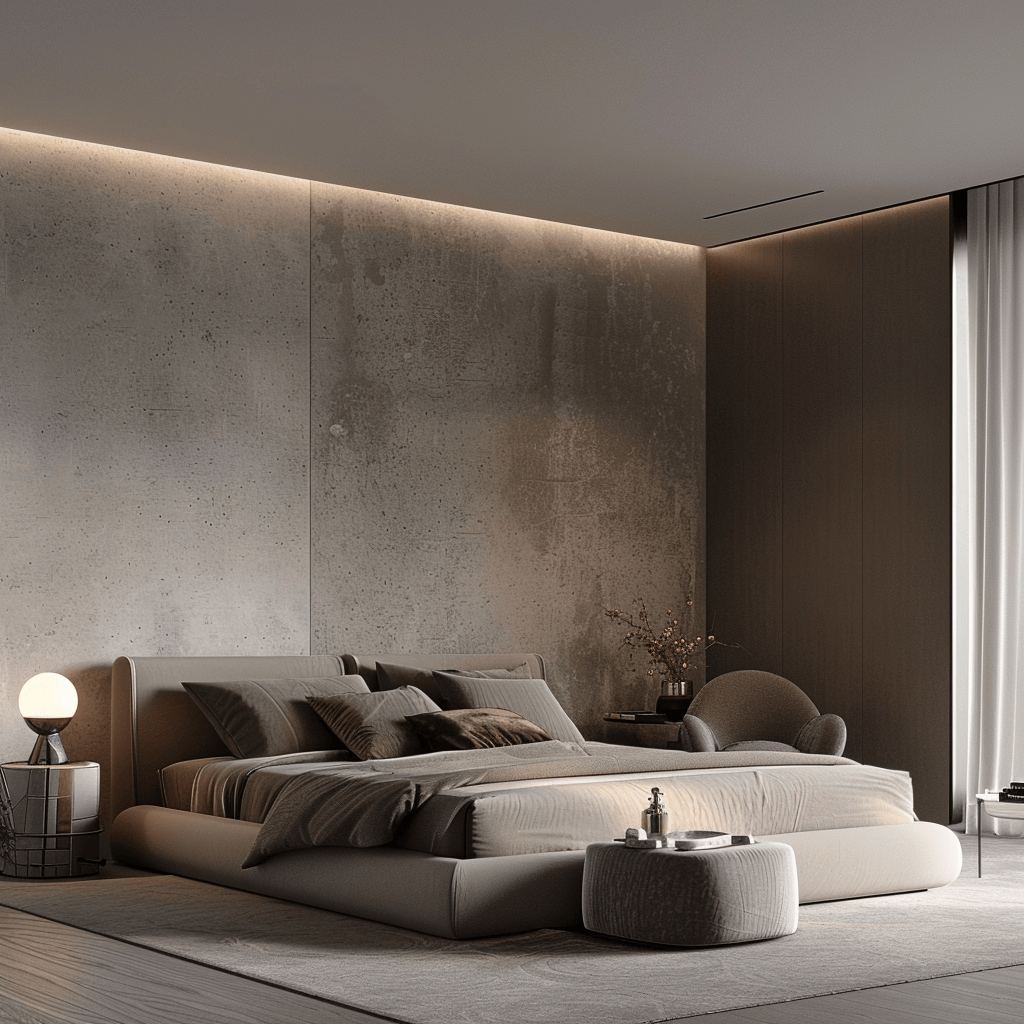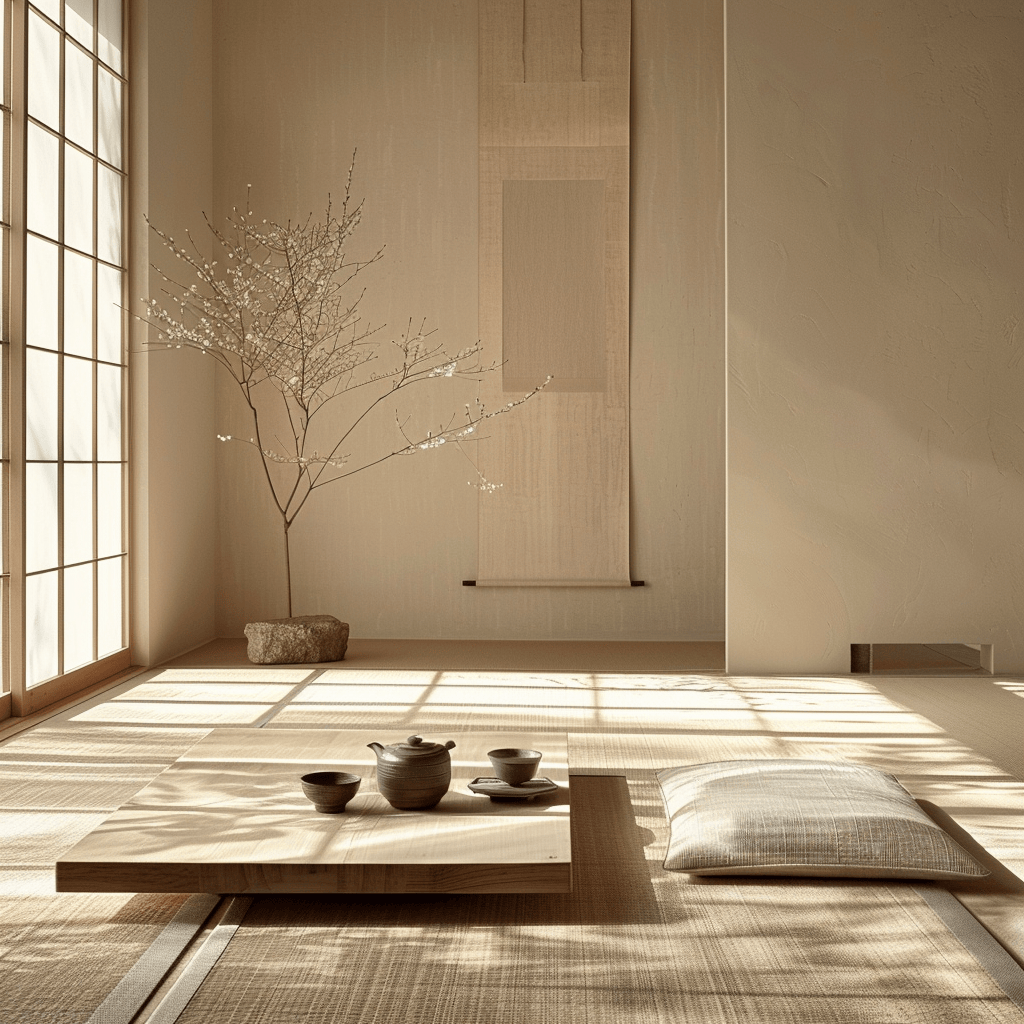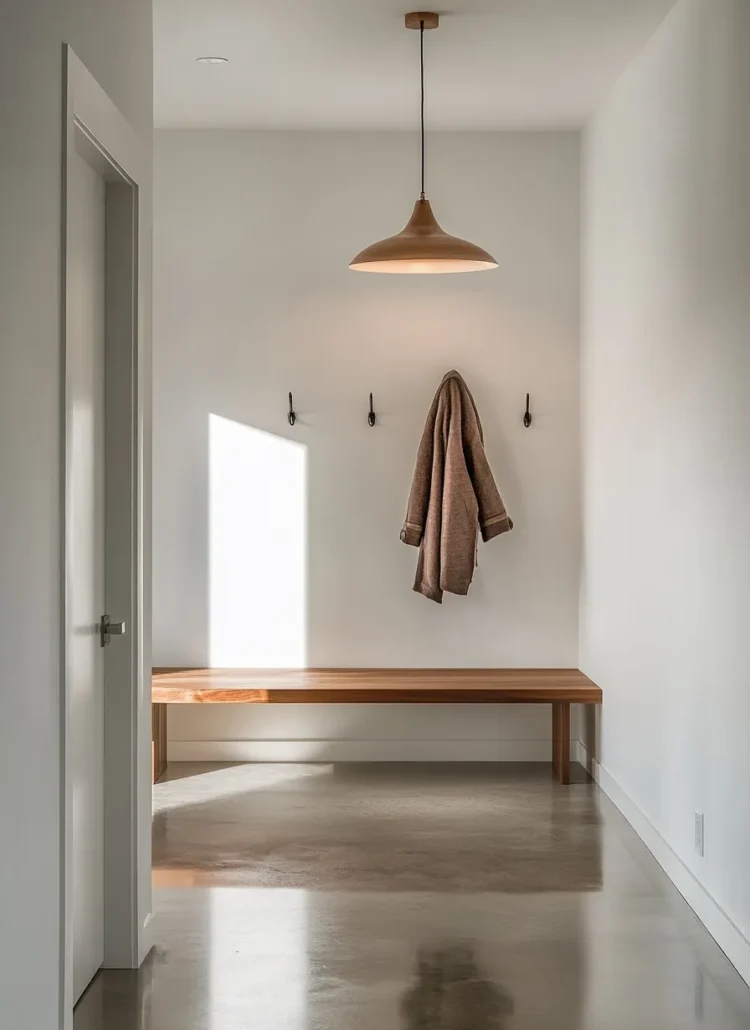Imagine stepping into a space that instantly calms your mind and soothes your soul, all through the power of a carefully curated color palette. If you’re looking to transform your home into a serene, uncluttered haven, then embracing minimalist color might just be the key to unlocking a whole new level of tranquility and contentment. Join me on this exciting journey as we explore the world of minimalist color together, discovering how simple, understated hues can create a profoundly beautiful and peaceful living environment tailored just for you.

Defining Minimalist Color
Minimalist color refers to a simple, pared back approach to color in interior design. It typically involves a neutral base palette, with limited accent colors used sparingly to create visual interest and depth.

The Philosophy Behind Minimalist Color Schemes
The philosophy behind minimalist color schemes is rooted in the idea that less is more. By stripping away excess and focusing on the essential, minimalist design aims to create spaces that are calm, orderly, and visually appealing.

Color Psychology in Minimalist Design
Color plays a significant role in how we perceive and experience our surroundings. In minimalist design, the goal is to select colors that evoke a sense of tranquility, simplicity, and harmony. By understanding the psychological impact of different colors, you can create a space that promotes relaxation and well being.

The Impact of Color on Mood and Perception
Color has a profound impact on our emotions and perceptions. Bright, bold colors can energize and stimulate, while soft, muted tones can soothe and calm. In minimalist design, the goal is to select colors that promote a sense of tranquility and well being.

Selecting Colors that Evoke Tranquility and Simplicity
When selecting colors for a minimalist scheme, opt for hues that evoke a sense of serenity and simplicity. Neutral tones, such as white, beige, and gray, are often the foundation of minimalist palettes, as they create a sense of space and light. Soft, muted accent colors, such as pale blues, greens, and blush pinks, can add depth and interest without overwhelming the overall aesthetic.

The Minimalist Color Palette
At the heart of minimalist design lies a carefully curated color palette. Neutral colors, such as white, gray, beige, and taupe, form the foundation of most minimalist schemes. These colors create a sense of space, light, and serenity. Accent colors, when used sparingly, can add depth and visual interest without overwhelming the overall aesthetic.

Neutral Colors: The Foundation of Minimalist Design
A minimalist living room with a palette of neutral colors, including shades of white, beige, and gray, showcasing neutral tones as the foundation of minimalist design.

Shades of White
White is a classic choice for minimalist interiors, as it creates a sense of spaciousness and light. From crisp, bright whites to softer, creamier tones, there are countless shades to choose from.

Shades of Gray
Gray is another popular neutral in minimalist design, offering a sophisticated, modern alternative to white. From cool, blue toned grays to warmer, greige hues, gray can create a sense of depth and texture in a space.

Shades of Beige and Taupe
Beige and taupe are warm, inviting neutrals that can add a sense of coziness to a minimalist interior. These colors work well in spaces where you want to create a feeling of comfort and relaxation, such as bedrooms and living rooms.

Accent Colors in Minimalist Schemes
A minimalist kitchen with a neutral base of white and light gray, featuring small accents of muted blue in dish towels, a tea kettle, and a single piece of artwork.

Muted Earthy Tones
Muted earthy tones, such as sage green, terracotta, and dusty blue, can add a natural, organic feel to a minimalist space. These colors work well with neutral bases and can help to create a sense of harmony and balance.

Soft Pastels
Soft pastels, such as blush pink, pale lavender, and mint green, can add a touch of whimsy and romance to a minimalist interior. These colors are best used sparingly, as accent pieces or subtle touches throughout a space.

Monochromatic Accents
Monochromatic accents involve using different shades and tints of the same color to create depth and interest. For example, a minimalist living room might feature a palette of soft grays, with accents in darker and lighter shades of the same hue.

Applying Minimalist Color in Different Spaces
Minimalist color schemes can be adapted to suit any room in your home. In living rooms, a combination of neutral tones and subtle accents can create a serene, inviting atmosphere. Bedrooms benefit from soothing colors that promote restful sleep, while kitchens and bathrooms often feature clean, fresh palettes that evoke a sense of cleanliness and hygiene.

Living Rooms
In living rooms, a minimalist color scheme can help to create a serene, inviting atmosphere. Opt for a neutral base, such as white or beige, and add depth with textured fabrics and natural materials, such as wood and stone.

Creating a Serene Atmosphere
In living rooms, a minimalist color scheme can help to create a serene, inviting atmosphere. Opt for a neutral base, such as white or beige, and add depth with textured fabrics and natural materials, such as wood and stone.

Balancing Neutrals with Accents
To prevent a minimalist living room from feeling too stark or cold, incorporate accent colors through artwork, throw pillows, or a statement piece of furniture. Choose colors that complement your neutral base and add visual interest without overwhelming the space.

Bedrooms
In bedrooms, soothing colors are essential for promoting restful sleep. Opt for a palette of soft, muted tones, such as pale blue, lavender, or warm beige. These colors can help to create a calming, tranquil atmosphere that encourages relaxation.

Soothing Colors for Restful Sleep
In bedrooms, soothing colors are essential for promoting restful sleep. Opt for a palette of soft, muted tones, such as pale blue, lavender, or warm beige. These colors can help to create a calming, tranquil atmosphere that encourages relaxation.

Incorporating Texture to Add Depth
To add depth and interest to a minimalist bedroom, incorporate a variety of textures through bedding, curtains, and floor coverings. Natural materials, such as linen, cotton, and wool, can add warmth and tactile appeal without detracting from the overall simplicity of the space.

Kitchens and Dining Areas
In kitchens and dining areas, clean, fresh color schemes are a popular choice for minimalist design. White, gray, and pale wood tones can create a sense of spaciousness and hygiene, while also providing a neutral backdrop for food and decor.

Clean and Fresh Color Schemes
In kitchens and dining areas, clean, fresh color schemes are a popular choice for minimalist design. White, gray, and pale wood tones can create a sense of spaciousness and hygiene, while also providing a neutral backdrop for food and decor.

Using Contrast for Visual Interest
To add visual interest to a minimalist kitchen or dining area, consider incorporating contrast through cabinetry, countertops, or backsplashes. For example, a white kitchen might feature a dark gray island or black pendant lights to create a focal point and add depth to the space.

Bathrooms
In bathrooms, minimalist color schemes can help to create a spa like atmosphere of serenity and relaxation. Opt for a palette of soft, soothing tones, such as white, pale gray, or beige, to create a sense of cleanliness and tranquility.

Spa Like Serenity with Minimalist Colors
In bathrooms, minimalist color schemes can help to create a spa like atmosphere of serenity and relaxation. Opt for a palette of soft, soothing tones, such as white, pale gray, or beige, to create a sense of cleanliness and tranquility.

Mixing Warm and Cool Tones
To add depth and interest to a minimalist bathroom, consider mixing warm and cool tones. For example, a cool gray tile floor might be paired with warm, beige walls and natural wood accents to create a balanced, inviting space.

Minimalist Color and Lighting
Lighting plays a crucial role in how we perceive color in a space. Natural light can enhance the beauty of minimalist color schemes, making rooms feel bright, airy, and spacious. When selecting artificial lighting, consider options that complement your chosen colors and create a warm, inviting ambiance.

Natural Light and Minimalist Color Schemes
Natural light is a key element in minimalist design, as it can enhance the beauty and simplicity of a neutral color palette. When designing a minimalist space, consider how natural light will interact with your chosen colors throughout the day, and select hues that will be enhanced by the changing light.

Artificial Lighting to Enhance Minimalist Colors
In addition to natural light, artificial lighting can also play a role in how minimalist colors are perceived in a space. Opt for lighting that complements your chosen colors and creates a warm, inviting ambiance. Dimmable fixtures and soft, diffused light sources can help to create a sense of calm and relaxation.

Texture and Pattern in Minimalist Color Schemes
While minimalist design emphasizes simplicity, incorporating subtle textures and patterns can add depth and visual interest to a space. Opt for textures and patterns that complement your color palette, such as natural wood grains, woven fabrics, or understated geometric prints.

Subtle Textures to Complement Minimalist Colors
While minimalist design emphasizes simplicity, incorporating subtle textures can add depth and visual interest to a space. Natural materials, such as wood, stone, and woven fabrics, can add warmth and tactile appeal without overwhelming the overall aesthetic.

Minimalist Patterns and Prints
When incorporating patterns and prints into a minimalist color scheme, opt for designs that are simple, geometric, or abstract. Avoid busy, complex patterns that can detract from the overall simplicity of the space. Tone on tone patterns or subtle, water color inspired prints can add visual interest without competing with the minimalist palette.

Minimalist Color in Different Design Styles
Minimalist color schemes can be incorporated into various design styles, from Scandinavian minimalism, with its focus on light, natural materials, to Japanese minimalism, which emphasizes simplicity, balance, and harmony. Industrial minimalism combines neutral tones with raw, utilitarian elements for a unique, pared back aesthetic.

Scandinavian Minimalism
Scandinavian minimalism is characterized by a focus on light, natural materials, and a clean, simple aesthetic. This style often features a palette of white, gray, and pale wood tones, with accents in soft, muted colors such as pale blue or sage green.

Japanese Minimalism
Japanese minimalism emphasizes simplicity, balance, and harmony, with a focus on natural materials and a connection to the outdoors. This style often features a neutral palette of white, beige, and natural wood tones, with accents in muted earthy hues such as terracotta or mossy green.

Industrial Minimalism
Industrial minimalism combines the simplicity of minimalist design with the raw, utilitarian elements of industrial style. This style often features a palette of neutral tones, such as white, gray, and black, with accents in bold, primary colors or metallic finishes.

Accessories and Decor in Minimalist Color Schemes
When accessorizing a minimalist space, less is often more. Choose artwork, plants, and decor that complement your color scheme without competing for attention. Minimalist textiles and fabrics, such as linen, cotton, and wool, can add warmth and texture to a room without detracting from the overall simplicity.

Choosing Minimalist Artwork
When selecting artwork for a minimalist space, opt for pieces that complement your color scheme and add visual interest without overwhelming the room. Abstract prints, simple line drawings, and black and white photography are all popular choices for minimalist interiors.

Incorporating Plants and Natural Elements
Plants and natural elements can add life, color, and texture to a minimalist space without detracting from the overall simplicity. Opt for low maintenance, sculptural plants such as succulents or snake plants, and display them in simple, understated pots or planters.

Minimalist Textiles and Fabrics
When selecting textiles and fabrics for a minimalist space, opt for natural materials such as linen, cotton, and wool in neutral or muted tones. These materials add warmth and texture to a space without competing with the overall color scheme. Avoid busy patterns or bold colors that can detract from the minimalist aesthetic.

Maintaining a Minimalist Color Scheme
To maintain the serenity of a minimalist color scheme, it’s essential to regularly edit and simplify your space. Periodically reassess your belongings and decor, removing items that no longer serve a purpose or align with your aesthetic. By decluttering and curating your possessions, you can create a space that feels calm, ordered, and inviting.

Editing and Simplifying Your Color Palette
To maintain the serenity of a minimalist color scheme, it’s essential to regularly edit and simplify your palette. Periodically reassess your belongings and decor, removing items that no longer serve a purpose or align with your aesthetic. Be selective when introducing new colors or patterns, and opt for pieces that complement your existing scheme.

Regularly Decluttering and Reassessing Your Space
In addition to editing your color palette, regularly decluttering and reassessing your space is key to maintaining a minimalist aesthetic. Remove excess belongings and decor that can detract from the overall simplicity of the space, and be intentional about what you choose to keep or introduce. By curating your possessions and regularly reassessing your space, you can create a home that feels calm, ordered, and inviting.

Conclusion
Embracing minimalist color in your home can have a profound impact on your well-being and quality of life. By selecting a palette that promotes tranquility, simplicity, and harmony, you can create a space that serves as a peaceful retreat from the stresses of daily life. We encourage readers to experiment with minimalist color schemes and discover the transformative power of simplicity in their own homes.

The Benefits of Embracing Minimalist Color in Your Home
Embracing minimalist color in your home can have a profound impact on your well being and quality of life. By creating a space that is calm, uncluttered, and visually appealing, you can reduce stress, improve focus, and enhance your overall sense of contentment and happiness.

Encouraging Readers to Experiment with Minimalist Color Schemes
If you’re interested in incorporating minimalist color into your home, we encourage you to start small and experiment with different palettes and techniques. Begin by simplifying your existing color scheme, removing excess decor and focusing on a neutral base with limited accent colors. As you become more comfortable with minimalist design, you can gradually introduce new elements and refine your aesthetic over time. With patience, intention, and a willingness to embrace simplicity, you can create a home that is both beautiful and deeply satisfying.

